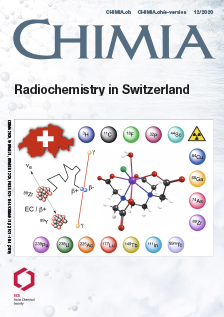Radiochemical Research with Transactinide Elements in Switzerland
DOI:
https://doi.org/10.2533/chimia.2020.924PMID:
33357284Keywords:
Periodic table, Relativistic effects, Superheavy elements, Transactinide elements, TransactinidesAbstract
Here, we present a review on a fundamental radiochemical research topic performed by Swiss scientists in national and international collaborations, utilizing large accelerator facilities at the Paul Scherrer Institute as well as abroad. The chemical investigation of the heaviest elements of the periodic table is a truly multidisciplinary effort, which allows scientists to venture into a variety of fields ranging from nuclear and radiochemistry to experimental and theoretical work in inorganic and physical chemistry all the way to nuclear and atomic physics. The structure and fundamental ordering scheme of all elements in the periodic table, as established more than 150 years ago, is at stake: The ever increasing addition of new elements at the heavy end of the periodic table together with a growing influence of relativistic effects, raises the question of how much periodicity applies in this region of the table. Research on the heaviest chemical elements requires access to large heavy-ion accelerator facilities as well as to rare actinide isotopes as target materials. Thus, this scientific area is inevitably embedded in joint international efforts. Its fundamental character ensures academic relevance and thereby substantially contributes to the future of nuclear sciences in Switzerland.Downloads
Published
2020-12-23
Issue
Section
Scientific Articles
License
Copyright (c) 2020 Patrick Steinegger, Robert Eichler

This work is licensed under a Creative Commons Attribution-NonCommercial 4.0 International License.
How to Cite
[1]
Chimia 2020, 74, 924, DOI: 10.2533/chimia.2020.924.







